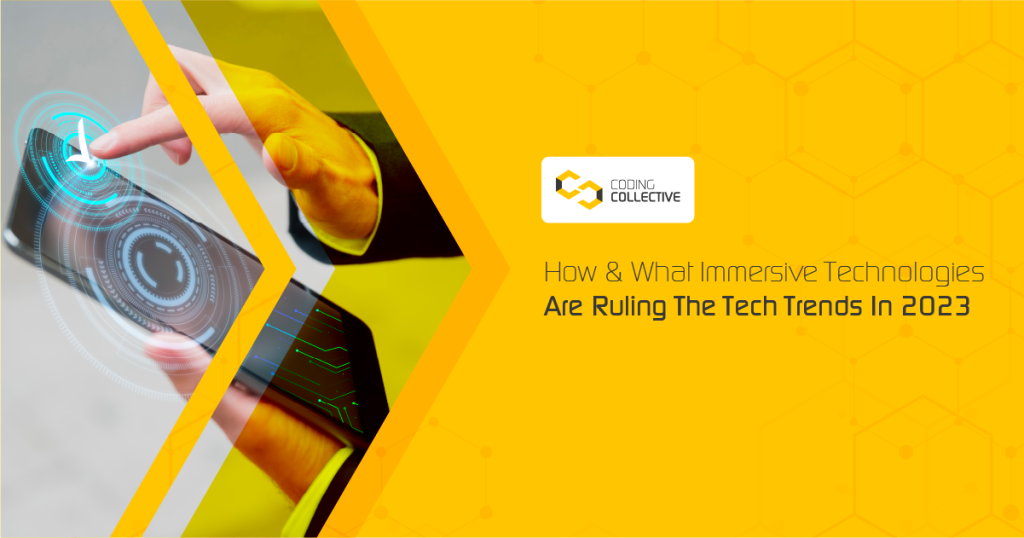
Immersive technologies are changing the way we interact with the world around us. From virtual reality (VR) and augmented reality (AR) to haptic technology and 5G networks, these technologies are becoming increasingly popular and accessible. In 2023, we can expect to see even more immersive technologies emerge, with new and innovative applications across a range of industries.
So how and what immersive technologies are ruling the tech trends in 2023? Let’s take a closer look.
1. Virtual Reality (VR)
VR is one of the most exciting and rapidly evolving immersive technologies. In 2023, we can expect to see even more advanced VR hardware and software, with more powerful processors, better graphics, and more intuitive interfaces. This will enable users to experience even more realistic and immersive virtual environments, with applications ranging from gaming and entertainment to healthcare and education.
2. Augmented Reality (AR)
AR technology allows users to overlay digital content in the real world, creating a mixed-reality experience. In 2023, AR is expected to become more prevalent in industries such as retail and e-commerce, where it can be used to create immersive shopping experiences. We can also expect to see more AR applications in healthcare, education, and training, where it can be used to simulate real-world scenarios and improve learning outcomes.

3. Haptic Technology
Haptic technology simulates the touch and physical sensations, allowing users to experience digital content in a more immersive way. In 2023, haptic technology is expected to become even more sophisticated and realistic, with the development of new materials and sensors that can simulate a wider range of sensations. This will enable more immersive experiences in gaming, entertainment, and other industries.
4. 5G Networks
5G networks are set to revolutionize the way we use and interact with immersive technologies. With faster speeds and lower latency, 5G networks will enable more seamless and immersive experiences, particularly for VR and AR applications. In 2023, we can expect to see more applications of 5G technology in areas such as gaming, entertainment, and education.
5. Artificial Intelligence (AI)
AI technology is already being used to enhance immersive experiences, such as personalized recommendations and predictive analytics. In 2023, AI is expected to become more integrated into immersive technologies, enabling more realistic and personalized experiences. This will enable more sophisticated applications in areas such as healthcare, education, and training.
6. Wearable Technology
Wearable technology, such as smart glasses and haptic suits, is becoming more advanced and integrated with immersive technologies. In 2023, we can expect to see more wearable devices that enable more immersive and interactive experiences. This will enable new applications in areas such as gaming, entertainment, and healthcare.
In conclusion, immersive technologies are ruling the tech trends in 2023, with new and innovative applications across a range of industries. From VR and AR to haptic technology, 5G networks, AI, and wearable technology, these technologies are transforming the way we experience and interact with the world around us. As these technologies continue to evolve and become more accessible, we can expect to see even more exciting applications and use cases emerge in the years to come.

